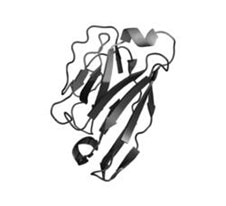On-bead digestion protocol: From immunoprecipitation with nanobodies to MS analysis
Follow the on-bead digestion protocol for effective mass spectrometry analysis of (co-) precipitated proteins
What makes on-bead digestion favorable?
Just pull down your protein of interest with immobilized Nanobodies, also termed VHHs or single-domain antibodies. Then follow the on-bead digestion protocol (see below) and submit the digest to your core facility for effective mass spectrometer analysis of (co-) precipitated proteins.
This way you can:
- obtain reliable IP results – superior binding performance
- reduce background – high affinity and selective binding
- improve signal-to-noise ratio – more sample vs. less nanobody fragments
- save time – no elution of bound protein
- keep protein concentration high – no sample dilution
- better retention of interacting proteins (Co-IP) – less sample manipulation
ChromoTek Nano-Traps like GFP-Trap, RFP-Trap, Myc-Trap, or Spot-Trap, etc. consist of immobilized alpaca nanobodies. These are the ideal affinity reagents for immunoprecipitation followed by on-bead digestion for subsequent analysis by mass spectrometry because they have high affinity and small size.
Why is this one the better protocol for hyphenated IP/ MS?
On-bead digestion of protein:nanobody-complexes from immunoprecipitation results in a low single digit number of peptides from the capturing nanobody. This is because of its small size (14 kDa) and low number of accessible lysine residues. For example, on-bead digestion of GFP-fusion proteins bound to GFP-Trap gains just 4 nanobody peptides!
Conventional antibodies, i.e. IgGs, are ten times larger than nanobodies and have more lysine residues. Hence, their tryptic digestion results in an increased number of antibody peptides, which potentially interfere during MS analysis.
That’s why so many mass spec laboratories like ChromoTek’s Nano-Traps for MS analysis of Co-IP results.
 Structure of the ChromoTek anti-GFP-VHH
Structure of the ChromoTek anti-GFP-VHH
"The best results were obtained by direct tryptic digest of the material on beads followed by mass spectrometry.”
Zoltan Lipinszki et al. (2014)
Based on Hubner et. al (2010), we have developed an on-bead digestion procedure for immunoprecipitated proteins. For the on-bead trypsin digestion protocol of ChromoTek GFP-Trap, please click here:
The protocol can also be used with all ChromoTek Nano-Traps.
References:
Arne H. Smits, Pascal W. T. C. Jansen, Ina Poser, Anthony A. Hyman, Michiel Vermeulen; Stoichiometry of chromatin-associated protein complexes revealed by label-free quantitative mass spectrometry-based proteomics. Nucleic Acids Res 2013; 41 (1): e28. doi: 10.1093/nar/gks941
Zoltan Lipinszki, Peng Wang, Rhys Grant, Catherine Lindon, Nikola S. Dzhindzhev, Pier Paolo D’Avino, Marcin R. Przewloka, David M. Glover, Vincent Archambault; Affinity Purification of Protein Complexes from Drosophila Embryos in Cell Cycle Studies. Methods Mol Biol. 2014;1170:571-88. doi: 10.1007/978-1-4939-0888-2_33.
Susan L. Kloet, Matthew M. Makowski, H. Irem Baymaz, Lisa van Voorthuijsen, Ino D. Karemaker, Alexandra Santanach, Pascal W.T.C. Jansen, Luciano Di Croce, Michiel Vermeulen; The dynamic interactome and genomic targets of Polycomb complexes during stem cell differentiation. Nat Struct Mol Biol. 2016 July ; 23(7): 682–690. doi:10.1038/nsmb.3248
Benedetta Turriziani, Amaya Garcia-Munoz, Ruth Pilkington, Cinzia Raso, Walter Kolch, Alexander von Kriegsheim; On-Beads Digestion in Conjunction with Data-Dependent Mass Spectrometry: A Shortcut to Quantitative and Dynamic Interaction Proteomics. Biology 2014, 3(2), 320-332; doi:10.3390/biology3020320
Hubner, N.C., Bird, A.W., Cox, J., Splettstoesser, B., Bandilla, P., Poser, I., Hyman, A., Mann, M. (2010). Quantitative proteomics combined with BAC TransgeneOmics reveals in vivo protein interactions. Journal of Cell Biology 189(4), 739-754.